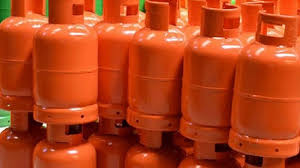The average cost of refilling a 12.5kg cylinder of Liquefied Petroleum Gas (LPG), commonly known as cooking gas, dropped significantly in August 2025, according to market checks and fresh data released by the National Bureau of Statistics (NBS).
Radarr Africa findings showed that the average price declined by 17.4 percent month-on-month, from ₦14,375 in July to ₦11,875 in August. On a year-on-year basis, the average retail price also fell by 16.7 percent compared to ₦14,261.57 recorded in the same period of 2024.
In retail terms, the price of 1kg of cooking gas now sells for between ₦950 and ₦1,020, depending on the location. Some filling stations in urban centres sell at ₦1,000, while others in semi-urban areas are slightly higher.
However, the most recent NBS Cooking Gas Price Watch Report for July 2025 painted a different picture. It indicated that the average retail price for refilling a 12.5kg cylinder fell only slightly—by 1.91 percent—month-on-month to ₦20,609.48 in July, from ₦21,010.56 in June 2025.
The NBS report also provided a breakdown by states, showing wide variations in prices across the country.
- Highest Prices: Adamawa State recorded the highest average price at ₦22,528.39, followed closely by Rivers State at ₦22,512.49 and Taraba at ₦22,363.57.
- Lowest Prices: Yobe State had the lowest average retail price at ₦19,030.00, followed by Niger at ₦19,154.99 and Nasarawa at ₦20,000.62.
This variation highlights the role of transportation costs, distribution networks, and regional demand in determining final retail prices. Northern states far from coastal supply terminals generally face higher prices due to logistics and security-related costs.
Industry observers say the sharp drop reported in August suggests a mixture of factors, including easing global LPG prices, better supply from local producers, and government efforts to stabilise domestic markets. Nigeria currently relies on a mix of local production and imports to meet its cooking gas demand, but supply disruptions often push up prices.
The decline comes as a relief to many households who had been battling with high energy costs. Cooking gas is the preferred alternative to kerosene and firewood in urban and semi-urban areas, and rising prices in recent years forced some families back to less clean options.
Economic analysts note that the steep reduction in August, compared to the NBS July report, may reflect the impact of market adjustments that occurred after the data window used by the bureau. They stressed the importance of aligning official statistics with real-time market surveys to provide a clearer picture of trends affecting consumers.
The government has in recent months intensified efforts to encourage wider adoption of LPG as part of its clean energy policy. Programmes aimed at increasing storage capacity, expanding distribution infrastructure, and reducing taxes on LPG imports have been introduced to stabilise supply and lower costs.
Yet, despite the drop in prices, some Nigerians say affordability remains a challenge. With average minimum wage still low and inflation eroding household incomes, even ₦950 per kilogram is seen as expensive by many families. Consumer advocates have called for stronger regulatory interventions to ensure that gas price reductions are sustained and not reversed by sudden supply shocks.
Operators in the downstream sector have also urged government to improve investment in local LPG processing plants and pipelines to reduce overdependence on imports. They argue that greater self-sufficiency in gas production will help shield the Nigerian market from global price swings.
For now, the downward trend in cooking gas prices offers some relief to homes and small businesses, particularly eateries that rely on LPG for daily operations. The coming months will determine whether the price stability holds or whether the sector will experience another round of volatility.
